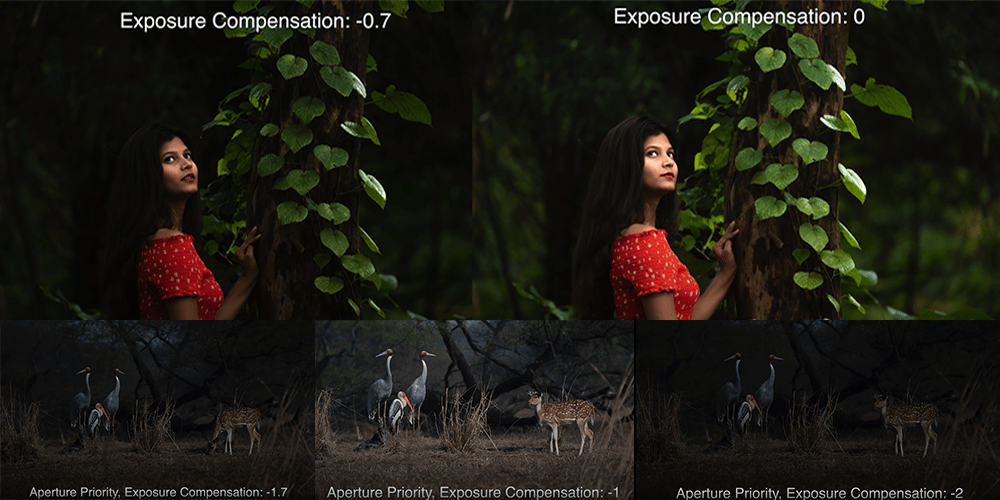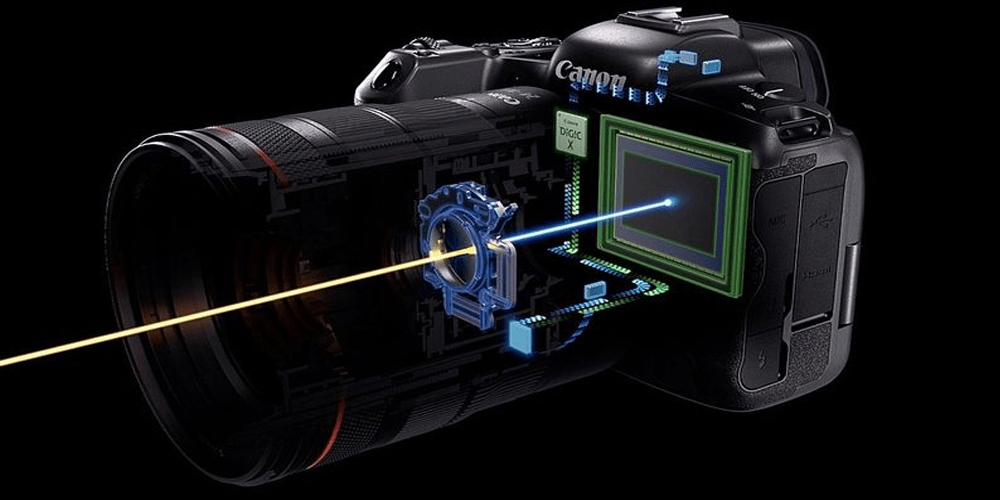If you’re looking for tips and techniques for shooting video with your new DSLR, this guide is the place to start. Here are some of the most important things to know when beginning your journey into videography.

Shooting video with a digital single-lens reflex camera, or DSLR for short, is an exciting way to capture stunning visuals and footage. Whether you’re just getting started in the world of videography or you’ve been shooting film for years, this beginner’s guide will provide you with the basics to help get you off on the right foot when it comes to shooting video with a DSLR.
From understanding lenses and exposure settings to learning about audio levels and composition – this guide will help give you all the tools needed to start producing amazing videos!
So let’s dive into what it takes to shoot great video with your DSLR!
Understanding The Basics of DSLR
Learning the basics of DSLR video can be intimidating, but it doesn’t have to be.
There are some key concepts and techniques that will give you a good foundation for more complex techniques later on.
Here are some of the most important things to understand when getting started with DSLR video:
Exposure
Learning how to expose your video properly is crucial. Exposure involves controlling the amount of light that reaches the camera’s sensor, which determines the image’s brightness. You can adjust exposure by adjusting shutter speed, ISO, and aperture settings.

Once you understand how the different exposure settings work, you can learn how to use them to get the desired look for your video. The most important setting is shutter speed, which affects how much light enters the camera and determines how much motion blur is visible in your footage.
The aperture controls the amount of light entering through each lens and the depth of field. ISO controls the sensor’s sensitivity and affects how much noise is visible in your image.
Related: What Is ISO in DSLR Cameras?
Lenses
Different lenses have different types of characteristics that affect the image. Prime lenses are a great choice for video production, as they provide better control over focus and depth of field.

Zoom lenses can be useful for shooting from a distance but tend to produce softer images with less definition.
Focus
Accurate focus is essential in video production, and this requires practice. Manual focus is great for capturing accurate images but can be challenging to master. On the other hand, Autofocus can help you get the job done faster.
Framing
Capturing a well-composed image is essential in DSLR video. Learn how to frame your shot creatively and within the boundaries of the frame. This will help you tell a story with your video and make it more visually appealing.
Motion
Capturing motion correctly is an important aspect of DSLR video. Learn how to use camera movement, slow motion, and other techniques to create different shots that convey emotion and provide movement in your video.
Audio
Capturing crisp and clear audio is essential for any video, but it cannot be easy with a DSLR camera. Learn how to properly mic your subject and set levels correctly so that the audio complements the visuals.
Stabilization and Movement
Stabilization is one of the most important aspects of DSLR video, as it will help you create smoother footage. You can use a tripod or gimbal to stabilize your shots, but there are also techniques for incorporating movement into your shots.

Learning to control the camera motion and frame movement can give your videos a more cinematic feel.
Related: What is Image stabilization?
Composition
Understanding the fundamentals of composition can help you create more aesthetically pleasing videos. Learn about the Rule of Thirds, leading lines, and other techniques for creating balanced and visually appealing shots.
By learning and understanding these concepts, you’ll be well on your way to creating beautiful DSLR videos. With practice and dedication, you’ll be able to master the art of DSLR video in no time!
Tips for Shooting with a DSLR
Take time to learn your camera
Shooting video with a DSLR can be a great way to get high-quality footage. However, taking the time to learn your camera before you start shooting is important. DSLRs can be complex devices, and it can take time to understand their features and functions. Many resources are available to help you learn your camera, including online tutorials and books. Once you’ve taken the time to learn your camera, you’ll be able to start shooting beautiful videos that you can be proud of.
Invest in high-quality lenses
Shooting video with a DSLR can be an incredibly rewarding experience, but it’s important to invest in high-quality lenses to get the most out of your camera. With the right lens, you’ll be able to capture stunning footage full of detail and clarity. You’ll also be able to take advantage of the shallow depth of field possible with a DSLR, which can give your videos a truly professional look. So if you’re serious about shooting video with a DSLR, invest in high-quality lenses. Your footage will thank you for it.
Use a tripod or monopod
Using a tripod or monopod is essential for achieving steady footage. When shooting handheld, it can be difficult to keep the camera stable and prevent unwanted movement. Using a tripod will help you get smoother footage and more precise focus. If you opt for a monopod, make sure it’s designed for video applications to handle the camera’s weight and provide a smooth motion while you’re shooting.
Record in continuous mode
Recording in continuous mode will help ensure you don’t miss any important moments when shooting video with your DSLR. Continuous mode allows the camera to record until you stop it continuously, so if something unexpected happens or there’s a sudden change in the action, you won’t miss it. This can be especially useful when shooting sports or other fast-paced activities.
Lighting and Camera Angles
Take time to experiment with the different lighting and camera angles available to you. Different types of lighting can dramatically impact your photos and videos, so it’s worth taking the time to explore the options available to you. Similarly, playing around with different camera angles can help you create more interesting compositions.
Use manual controls
If you want to take more creative photos and videos, try experimenting with the manual settings on your camera. Manual mode will let you control things like shutter speed and white balance and can be very helpful when shooting in difficult lighting conditions.
Experiment with composition
Developing a good sense of composition is important if you want to take great photos and videos with your DSLR. Try experimenting with different angles and perspectives and different lighting techniques to create interesting images that stand out from the crowd.
Use manual focus
When shooting with a DSLR camera, it’s important to understand how to use the manual focus feature to get sharp and clear images. Manual focus will give you more control over your photos and videos and is essential if you want to master DSLR photography.
Shooting in RAW Format
When shooting with a DSLR camera, it’s important to understand the benefits of shooting in RAW format. RAW files are uncompressed and contain more digital information than standard JPEG files, allowing you to make more adjustments to your photos and videos after they have been taken. This can be very useful when you want to get the most out of your DSLR photos and videos.
Use a Neutral Density Filter
If you want to achieve more creative shots with a DSLR, invest in a neutral-density filter. This filter reduces the amount of light reaching the camera’s sensor, allowing you to use longer shutter speeds even in bright conditions. This can be very useful when you want to blur motion or emphasize the effects of light.
Post-Production Tips and Techniques
Once you have finished shooting your project, it’s time to move into the post-production phase. Here are some tips and techniques that can help make sure your final product is of the highest quality:
Editing Software
Invest in a quality editing software program such as Adobe Premiere Pro, Final Cut Pro X, or Avid Media Composer. These professional-grade programs will give you the tools to edit your footage and create the look and feel you want for your project.
Color Grading
Once you have finished editing, you can use color grading to enhance the look of your footage. This can be done in various ways, from pre-made filters to manually adjusting the curves and luminance levels.
Visual Effects
Visual effects (VFX) add elements that weren’t present during the filming process. This can be anything from adding explosions or other special effects to digitally altering an existing shot.
Sound Design
The sound design of your project is just as important as the visual elements. You can use sound effects, background music, and voiceover to create a more immersive experience for your audience.
Outputting Your Final Project
After you finish your project, it’s time to output it for the world to see. There are a variety of formats and delivery methods, so you should make sure you choose the right one for your project.
Conclusion: How Do You Shoot A Professional Video With Your DSLR?
Now that you’ve armed yourself with all the basic knowledge necessary to start shooting amazing videos with your DSLR.
Try different techniques and styles until you find what works best for you and your camera.
If you have any other questions or queries, leave a comment below – we’d be happy to help!
Related: How To Transfer Photos/Videos From DSLR Camera To Laptop?
